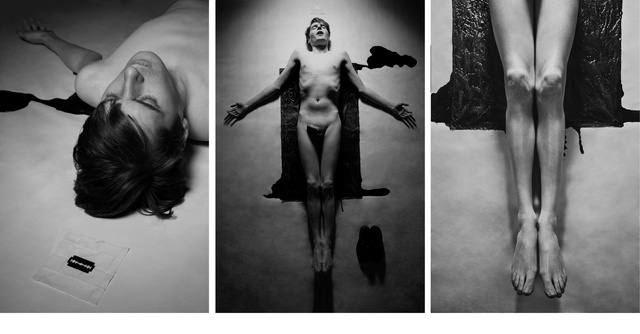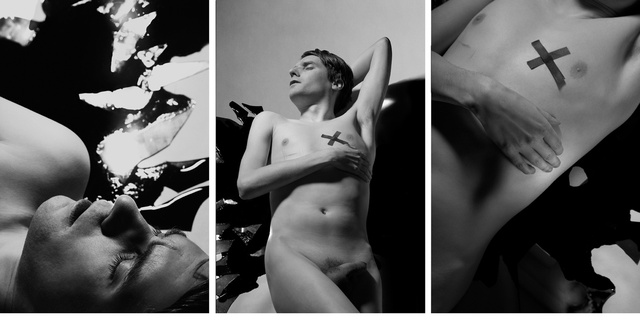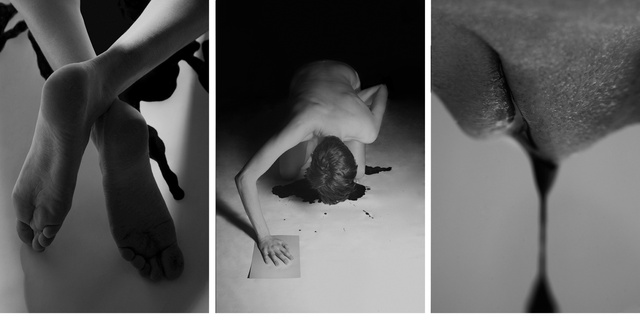COUP DE GRACE Photography: Karolina Urbaniak

Rudolf Schwarzkogler (1940-1969) Otto Muehl interviewed by Francesco Conz: Francesco Conz: Didn’t you meet him two or three days before his suicide together with Ossi Weiner. How did he behave? Otto Muehl: Ossi Weiner, Kurt Kalb and I were at the workers’ swimming area, Schwarzkogler turned up there, too. But he was quite alone and isolated himself. After that I was at my place together with Wiener in the Praterstrasse. By chance Ossi Weiner and I looked out of the window down onto Praterstrasse, there on the other side of the street I saw Schwarzkogler passing by bending forward and with tired steps. “Look, Schwarzkogler is walking over there”, I said. “I have a feeling that we won’t have him much longer”, Ossi Wiener responded in his cool manner. It was really striking how Schwarzkogler was walking along lost in thought. After his suicide, Edith, his partner, told me he had talked to her all through the night before jumping out of the window. He reproached her. He was jealous. When day was dawning she said: “I can’t stand it any longer. I want to sleep.” He left the room. After a while a policeman knocked on the door and asked if that dead man lying on the pavement was a friend of hers. She looked down and saw Schwarzkogler lying there. A man found him and said he had still been conscious, Schwarzkogler had stammered unintelligible words. Then he died.

Mark Rothko (1903-1970) Why So Many Real-Life Detective Stories End With a Rubber Stamp, Paul Wilkes, April 19, 1970, The New York Times Magazine: The body is lying in a pool of blood in the kitchen and the water in the sink is still running. Lappin glances quickly around the room and sees that the double-edged razor blade that apparently inflicted the deep gashes has a piece of Kleenex on one side. 'Suicides are amazingly careful not to cut their fingers as they slash their forearms' says Lappin. The artist's trousers are folded neatly over the back of a nearby chair. 'Didn't want to get blood on them. And the water in the faucet was on because he didn't want to leave a mess for somebody. He did himself in at the sink and fell to the floor when his blood level got too low. And he has hesitation marks on his forearm - little cuts to test the blade while he thought about it.' Rothko's wallet is intact and there is no sign of rifling in the studio, which contains scores of the artist's works, worth hundreds of thousands of dollars. A call was to the artist's doctor reveals that Rothko had been despondent after a recent operation and that his health generally had not been good. 'An open-and-shut suicide' says Lappin. Although he has never heard of Rothko and has no idea what the artist's works are worth, he takes no chances; he arranges for the police to guard the studio 24 hours a day.

Jacques Rigaut (1898-1929) Jacques Rigaut – Jacques Rigaut: Lying down naked on my bed, I was naked in the room. It was cold. I hurriedly buried myself under the blankets. I cocked the hammer, I could feel the cold of the steel in my mouth. At that moment I could probably feel my heart beating, just as I could feel it beating as I listened to the whistle of the shell before it exploded, as if in the presence of something irrevocable but still unconsummated. I pressed the trigger, the hammer clicked, but the shot didn’t fire. I then laid the weapon on a small table, probably laughing a little nervously. Ten minutes later, I was asleep. I think that I just made a rather important remark. What was it again? But of course! It goes without saying that I did not for an instant consider firing a second shoot. The important thing was not whether I died or not but that I had taken the decision to die.

Yukio Mishima (1925-1970) Autopsy performed on Mishima at the Keio Daigaku by Fuzoku Byõin: The cut he had made across his stomach was 13 cm across and between 7 cm and 9 cm deep; 60 cm of intestine had been exposed; he had bitten through his tongue, nearly severing it; there was a piece of the sword blade embedded in his teeth; cause of death – decapitation.